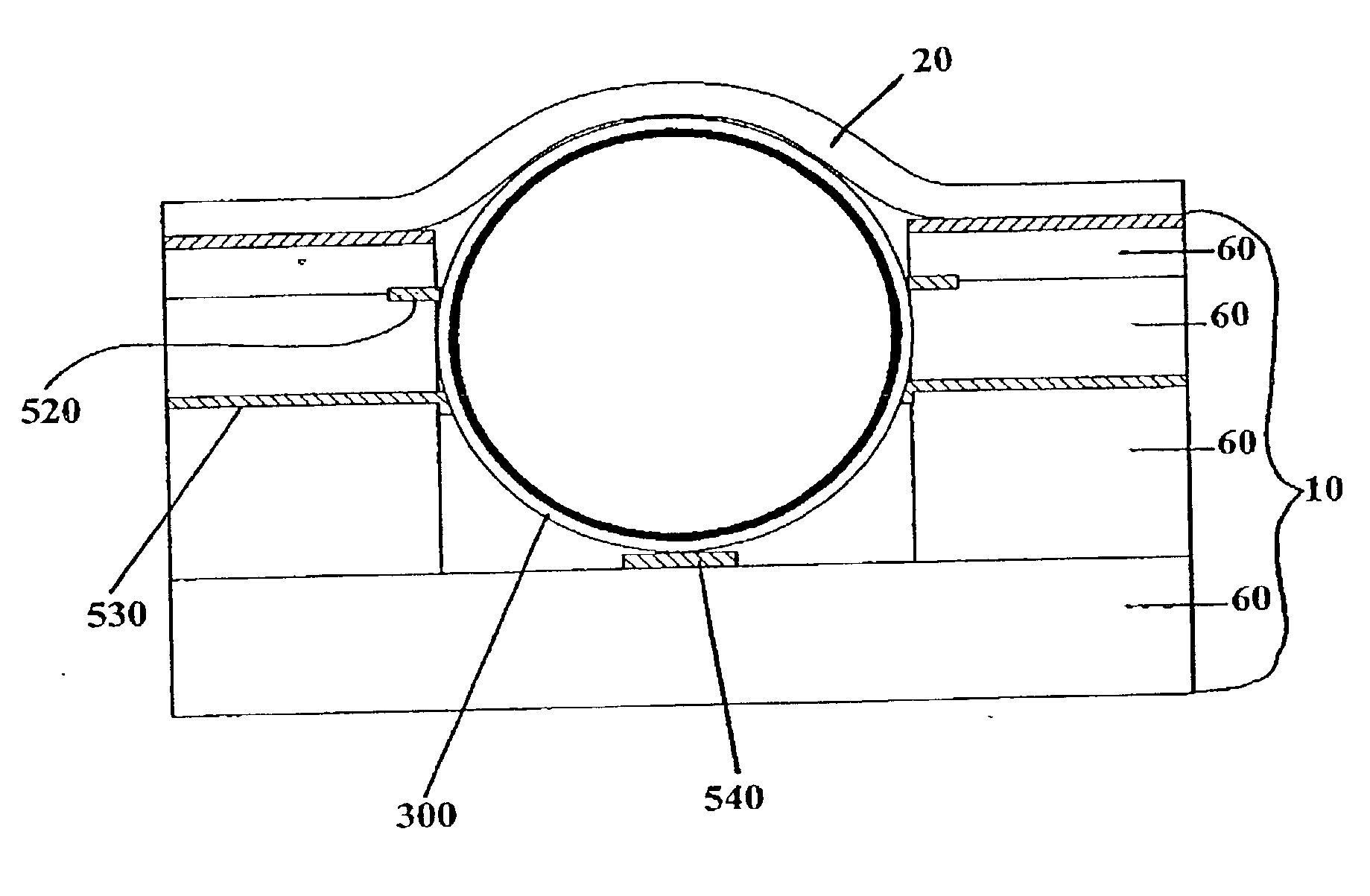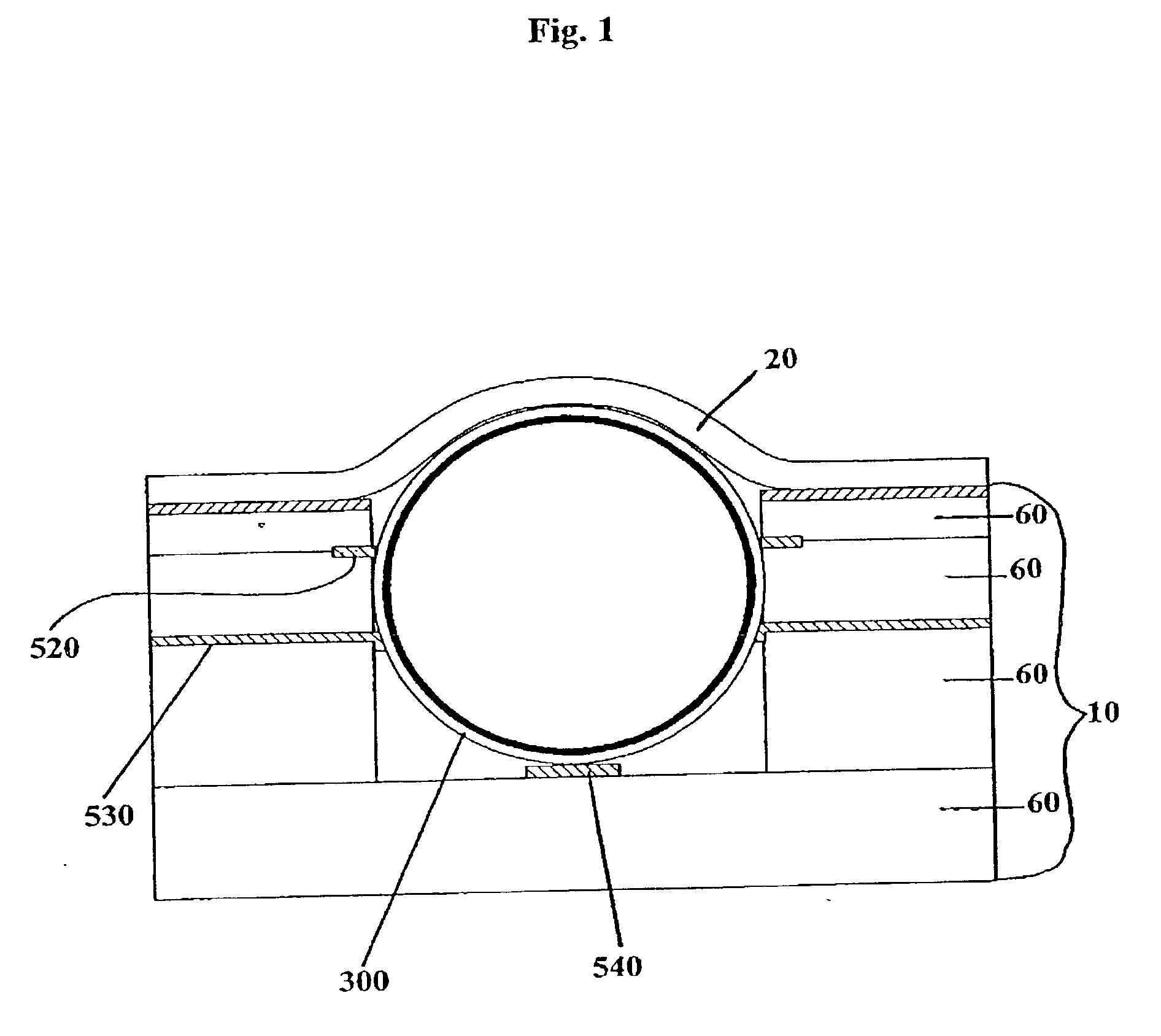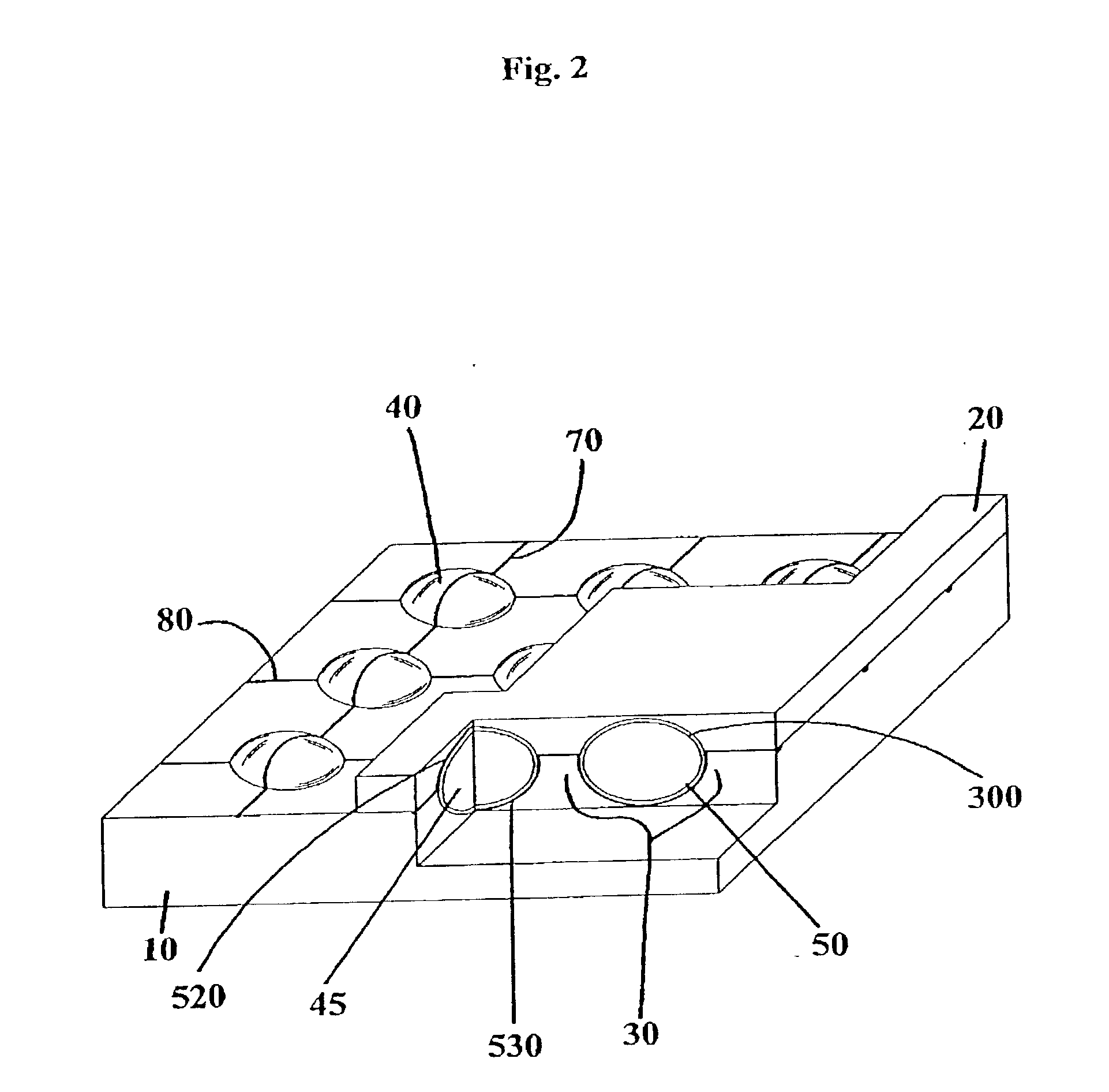Design, fabrication, testing, and conditioning of micro-components for use in a light-emitting panel
a technology of light-emitting panels and micro-components, applied in the field of light-emitting panels, can solve the problems of high cost, high cost of final plasma display, and high cost of manufacturing process and ultimately final plasma display
- Summary
- Abstract
- Description
- Claims
- Application Information
AI Technical Summary
Benefits of technology
Problems solved by technology
Method used
Image
Examples
Embodiment Construction
[0056] As embodied and broadly described herein, the preferred embodiments of the present invention are directed to a novel light-emitting panel. In particular, the preferred embodiments are directed to a micro-component capable of being used in the light-emitting panel and at least partially disposed in at least one socket.
[0057] FIGS. 1 and 2 show two embodiments of the present invention wherein a light-emitting panel includes a first substrate 10 and a second substrate 20. The first substrate 10 may be made from silicates, polypropylene, quartz, glass, any polymeric-based material or any material or combination of materials known to one skilled in the art. Similarly, second substrate 20 may be made from silicates, polypropylene, quartz, glass, any polymeric-based material or any material or combination of materials known to one skilled in the art. First substrate 10 and second substrate 20 may both be made from the same material or each of a different material. Additionally, the ...
PUM
 Login to View More
Login to View More Abstract
Description
Claims
Application Information
 Login to View More
Login to View More - R&D
- Intellectual Property
- Life Sciences
- Materials
- Tech Scout
- Unparalleled Data Quality
- Higher Quality Content
- 60% Fewer Hallucinations
Browse by: Latest US Patents, China's latest patents, Technical Efficacy Thesaurus, Application Domain, Technology Topic, Popular Technical Reports.
© 2025 PatSnap. All rights reserved.Legal|Privacy policy|Modern Slavery Act Transparency Statement|Sitemap|About US| Contact US: help@patsnap.com



